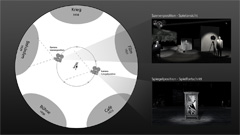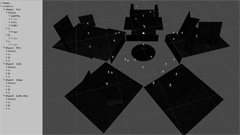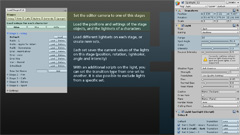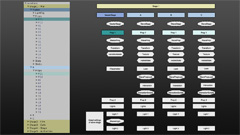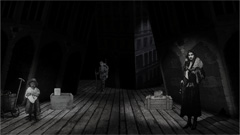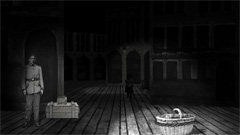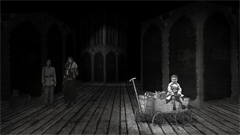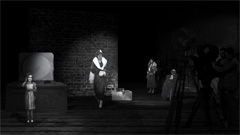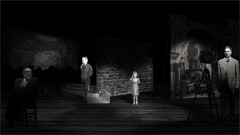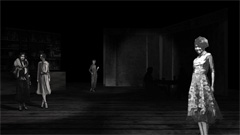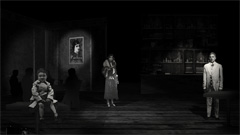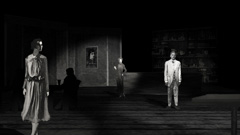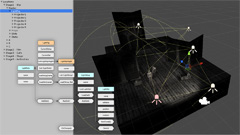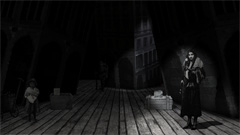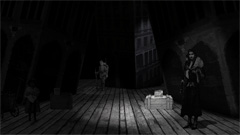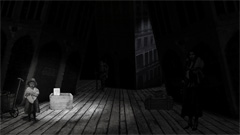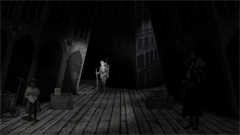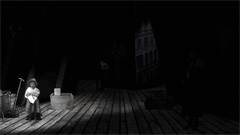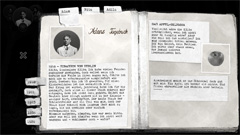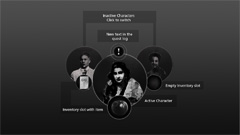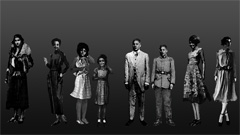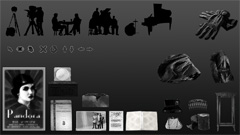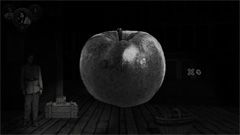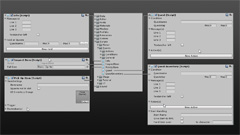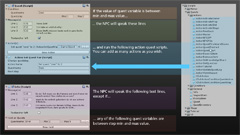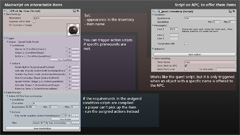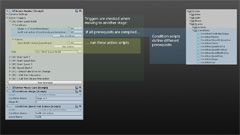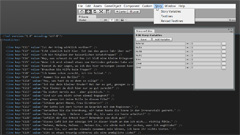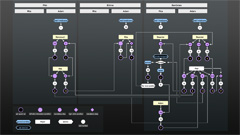Der zerbrochene Spiegel
Berlin 1920
Three Protagonists
Switch between three different fictive characters to explore the game.
Five Stages, Five Years
Delve into five different places and years in a theatrical environment.
Explore the Story
Interact with NPC and objects and catch a glimpse of the daily life of marginalized people in Berlin in the 1920ies.
Project
Research project at the GAME CHANGER Institute
Berlin (HTW), 2015-2016
Theme
Minority groups in Berlin during the Weimar Republic.
Project Description (IFAF)
My Job
► Level Design
► 2D Art
► System Design
Time frame
I worked on this project partime for 15 month.
Engine
Unity
Level Design
Level Editor Tool
I scripted a stage editor tool, to facilitate the building of the level and the lighting. This additional editor window has three main functions:
Set the editor camera to a specific scene at the push of a button.
Each stage exists in three different versions (one for each playable character). With this function, you can load the positions of the props of each character.
For each stage and for each character exist several light setups. With the third function of the stage editor, you can load and edit the different setups or create new ones.
Stage Design
Each protagonist sees the stages from a different perspective and in a different light. Have a look at three of these stages from the view of each player character.
I was responsible for the concept and design of all stages. I also scripted the theatrical behaviour of the props when switching between protagonists.
Streets - 1918
The protagonist finds themselves in the streets of Berlin short after the ending of the First World War.
Film - 1921
Working in the movie business is the dream of some of the protagonist, but not all of them. This affects how they perceive their environment.
Café - 1923
The Café is a hub for the protagonist to meet friends, lovers and family.
Lighting
The lighting creates a theatrical atmosphere and guides the eye to the important areas on the stage, similar to a real theater. The spotlights are always on the NPC or objects relevant to the current quest.
2D Art
Art Concept
I was responsible for the art concept of this game.
2D Assets
I created some of the 2D assets and used a fast workflow of photo collage and digital painting.
User Interface
I designed most part of the user interface.
System Design and Programming
Gameplay Design
Together with the narrative designer in our team I designed the mechanisms of the game. Since it is a very story heavy game, most mechanics focus on how to interact with NPC and objects
Quest Editor
For easier implementation and controlling of the quests and flow of the game, I created different scripts and editor extensions.
Quest Implementation
I also implemented the quests written by our narrative designer into the game.
Programming
I was responsible for all code (C#) in this game, from first prototypes and level scripting to all programming of the gameplay.














